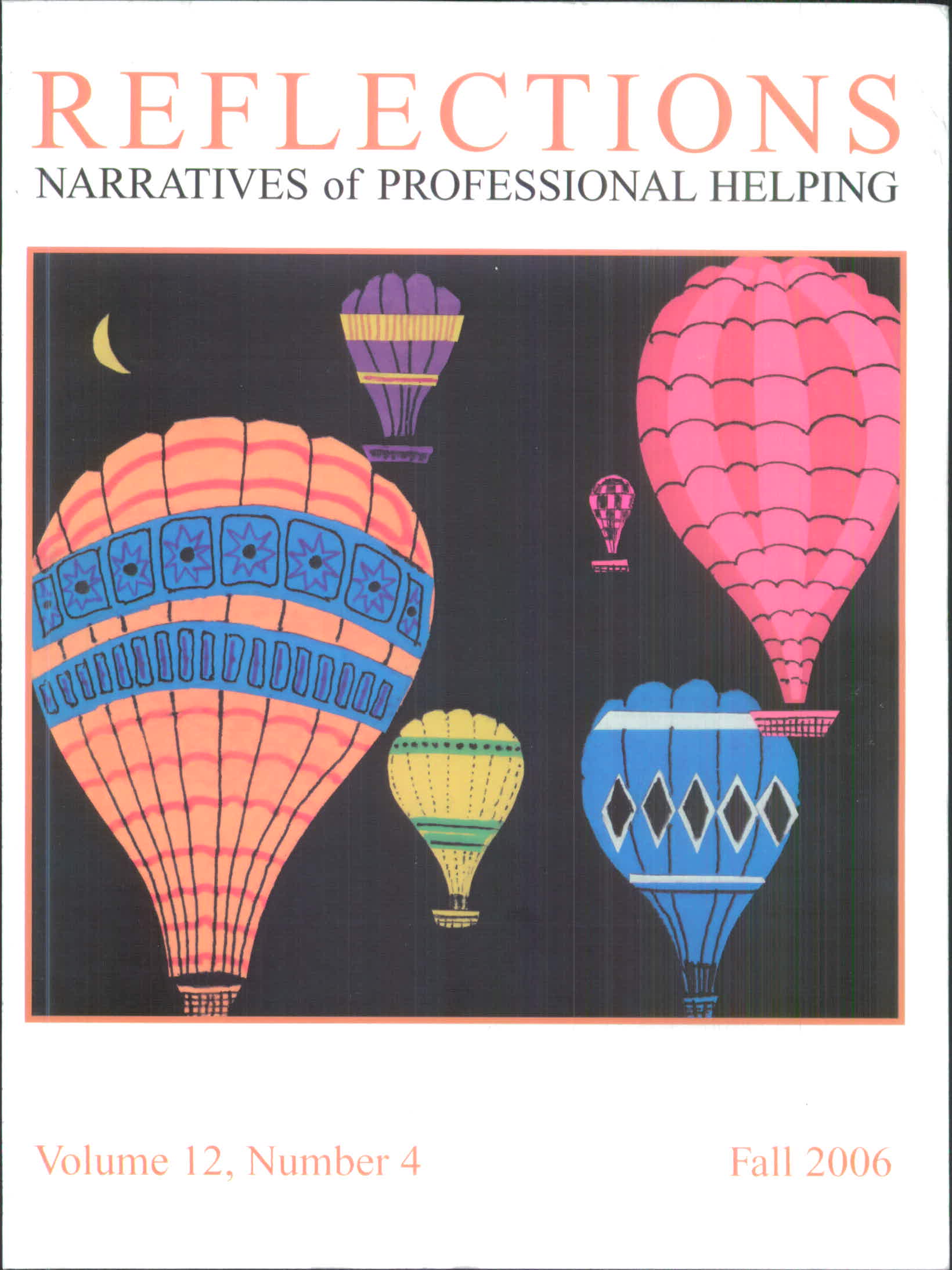The Cloak of Invulnerability: Secondary Trauma and the Helping Professional
Abstract
As a mental health professional, the author has conducted scores of psychological debriefings for emergency workers and others impacted by work related trauma. Many of the reactions he witnessed among the workers could be described as secondary trauma, which occurs as a result of exposure to a traumatic event. It wasn 't until he was involved in a debriefing in which the victim was an acquaintance that he experienced symptoms of secondary trauma himself. This narrative examines the process of trauma debriefing and the secondary impact on the debriefer. Case narratives have been modified and names have been changed so that privacy and confidentiality are maintained. This article is dedicated to the emergency workers who put themselves in harm's way when helping others, and to debriefers who witness this trauma through ihe narratives of emergency workers.
Downloads
How to Cite
Issue
Section
License
REFLECTIONS:
NARRATIVES OF PROFESSIONAL HELPING
SALEM STATE UNIVERSITY, PUBLISHER
PUBLICATION AGREEMENT
1. COPYRIGHT: If the manuscript you submit to this site (the “Manuscript”) is selected for publication in Reflections, the author(s) of the Manuscript hereby agree to transfer copyright of the Manuscript to Salem State University, including full and exclusive rights to reproduce the Manuscript in all media now known or later developed, including but not limited to electronic databases and microfilm, and in anthologies of any kind.
2. AUTHOR RE-USES OF MANUSCRIPT: As a professional courtesy, the author(s) retains the right to reprint the Manuscript again after publication in Reflections, in any work the author(s) is sole author, or in any edited work for which the author(s) is senior editor, though the author(s) is required to cite the Manuscript as a prior publication in “Reflections: Narratives of Professional Helping.” No further permission is necessary in writing from SSU, nor will SSU require fees of any kind for this reprinting. This statement is intended to provide a copyright release for the purposes set forth in this Section 2, and a photocopy of this Publication Agreement may be used when another publisher requires a written release.
3. READER RE-USES OF MANUSCRIPT: The author(s) acknowledge that registered readers of Reflections and others with access to the Manuscript may use the Manuscript consistent with applicable law including, but not limited to Fair Use under 17 U.S.C. § 107.
4. AUTHOR WARRANTIES: The author(s) represent(s) and warrant(s):
a.) that the Manuscript is the author's (authors') own work;
b.) that the Manuscript has been submitted only to this journal and that it has not been previously published;
c.) that the Manuscript contains no libelous or unlawful statements and does not infringe upon the civil rights of others;
d.) that the author(s) are not infringing upon anyone else’s copyright.
e.) that the author(s) are responsible for any individual or organizational names that are mentioned in the Manuscript, as SSU disclaims responsibility for references to individuals, organizations, facts, and opinions presented by the published author(s) in the Manuscript.
f.) That the author(s) have taken care to ensure that the Manuscript does not contain any identifiable information about clients or patients except as pursuant to appropriate permissions and forms of informed consent as provided for in all relevant laws and codes of ethics.
g.) That the Manuscript in no way violates any individual’s privacy rights.
The author(s) agree that if there is a breach of any of the above representations and warranties that the author(s) will indemnify SSU, including the publisher and editor of Reflections, and hold them harmless.
5. AUTHOR RETENTION OF PATENTS: The author(s) may have, within the Manuscript, descriptions of the author's (authors') own proprietary patents. Nothing herein shall be construed as a transfer of any proprietary right in such patents. Accordingly, the author(s) retains all proprietary rights in any such patents described in the Manuscript, but such reservation in rights does not include ownership of the Manuscript, and SSU shall retain full and exclusive rights to the Manuscript as set forth herein.
6. NOTE FOR U.S. GOVERNMENT EMPLOYEES: Any Manuscript authored by a U.S. government employee(s) as part of the employee's official duties, must be noted with your submission.
7. JOINT WORKS: Any Manuscript written by two or more authors with the intention that the Manuscript will be merged into one inseparable or interdependent parts of a unitary whole are considered a “Joint Work” under § 101 of the U.S. Copyright Act. This Agreement must be signed by all contributing authors to any Joint Work.
8. “WORK FOR HIRE” AUTHORS: If the Manuscript was written by an author(s) who was hired by another person or company to do so, the manuscript is considered a “Work Made for Hire” under § 101 of the U.S. Copyright Act. This Agreement must be signed by the “employer” who hired the author(s), as well as the author(s).
9. NO AMENDMENTS: This form is not valid if the author(s) add(s) any additional constraints and amendments. Please submit the article elsewhere for publication if the author(s) do not sign the form without alteration.

